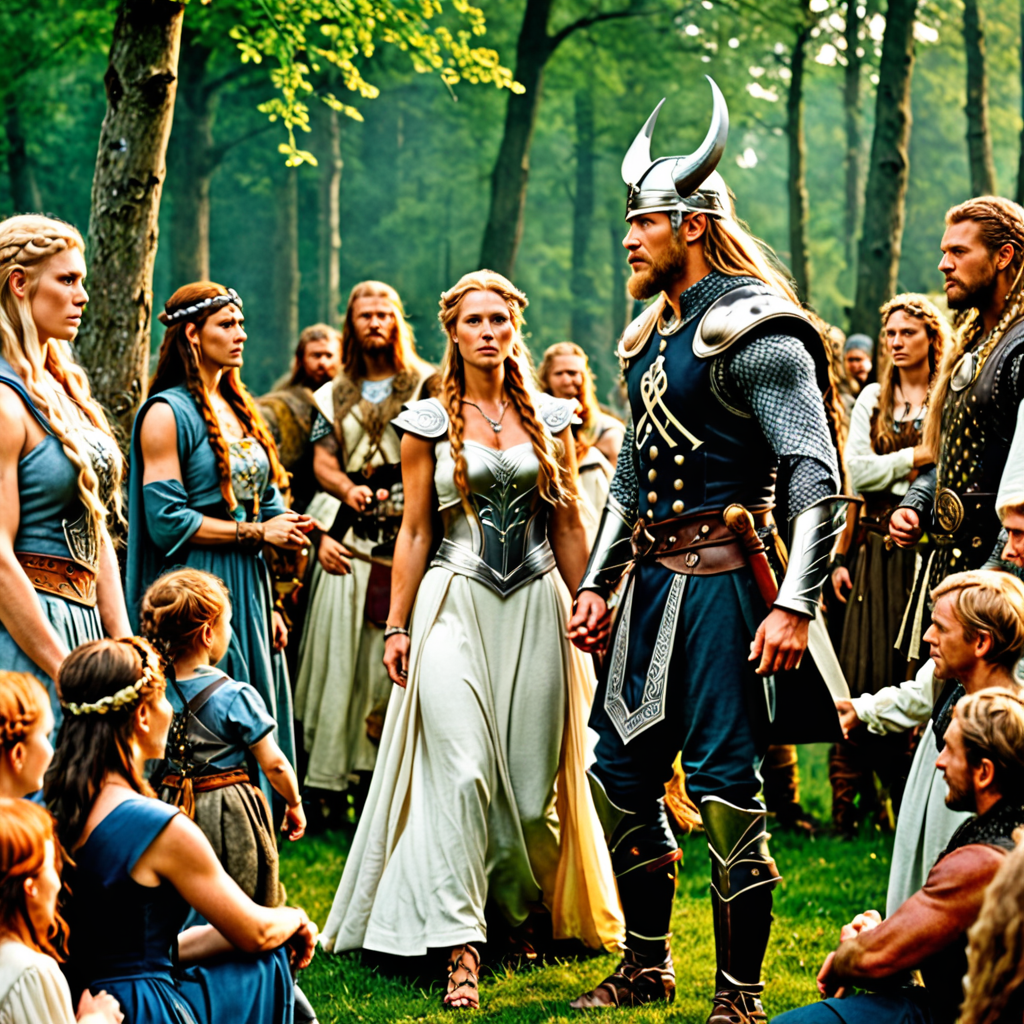1. Introduction: The Enchanting World of Finnish Mythology
Nestled in the heart of Scandinavia, Finnish mythology weaves a tapestry of enchanting tales, steeped in the beauty of the natural world and the complexities of human existence. These ancient stories, passed down through generations of storytellers, offer a glimpse into the vibrant imagination and profound spiritual beliefs of the Finnish people. From the ethereal realms of the gods to the depths of the underworld, Finnish mythology invites us on a journey of wonder and discovery.
2. The Tree of Life: Yggdrasil, the Cosmic Pillar
At the center of Finnish mythology lies Yggdrasil, the colossal Tree of Life. Its roots delve deep into the underworld, while its towering branches reach towards the heavens, connecting all realms of existence. Yggdrasil is a symbol of the interconnectedness of all things, a cosmic pillar that supports the very fabric of reality. Within its verdant boughs, the gods reside, their presence permeating the natural world.
3. The Sun and Moon: Luminaries of the Heavens
In Finnish mythology, the sun and moon play pivotal roles. The sun, known as Aurinko, represents warmth, light, and life. It is a symbol of hope and renewal, guiding the weary traveler on their path. The moon, known as Kuu, embodies the mysteries of the night, the ebb and flow of time, and the wisdom hidden within the shadows. Its gentle glow illuminates the darkest nights, offering solace and guidance to those who seek it.
4. Animals in Finnish Mythology: Totemic Spirits and Guardians
The natural world holds a sacred place in Finnish mythology, with animals revered as totemic spirits and guardians. The bear, a symbol of strength and courage, is considered a guardian of the forest, while the eagle, with its piercing gaze and soaring flight, represents wisdom and vision. The salmon, known for its resilience and determination, is a symbol of the life-giving force that flows through all living beings.
5. The Hammer of Thor: Mjölnir, the Weapon of Thunder
Among the gods of Finnish mythology, Thor, the god of thunder, stands tall. His mighty hammer, Mjölnir, is a symbol of his immense power and authority. Forged in the heart of the underworld, Mjölnir can unleash devastating blows, shattering mountains and vanquishing evil spirits. Its thunderous roar reverberates across the heavens, bringing both awe and fear to the hearts of mortals and gods alike.
6. The Sword of Väinämöinen: Sampo, the Source of Wisdom
In the Finnish epic poem, the Kalevala, Väinämöinen, a wise and enigmatic figure, wields the legendary sword, Sampo. Sampo is not merely a weapon; it is a symbol of wisdom, prosperity, and the power of creation. Its origins lie in the depths of the underworld, where it was forged by the master craftsman Ilmarinen. Sampo's radiance illuminates the darkness, dispelling ignorance and revealing the secrets of the universe.
7. The Sauna: A Sacred Ritual of Purification and Healing
The sauna holds a deeply revered place in Finnish culture and mythology. It is a sacred space where people gather to cleanse their bodies, minds, and spirits. The heat of the sauna induces a state of deep relaxation, allowing impurities to be released and healing to take place. The steam, infused with aromatic herbs, purifies the air, creating a sanctuary of well-being. The sauna is an integral part of Finnish tradition, passed down through generations and deeply woven into the fabric of society.
8. The Sibeliuksen Finlandia: Music as a Reflection of Finnish Spirit
The music of Jean Sibelius, particularly his iconic tone poem "Finlandia," is an evocative expression of the Finnish soul. His compositions draw inspiration from the landscapes, legends, and emotions that define the Finnish experience. "Finlandia," with its soaring melodies and dramatic harmonies, captures the essence of Finland's resilience, determination, and unwavering spirit. Sibelius's music has become synonymous with Finnish identity, resonating deeply with the hearts of Finns and music lovers worldwide.
9. Alvar Aalto's Architecture: Modernism Imbued with Ancient Symbolism
The renowned Finnish architect Alvar Aalto seamlessly blended modernism with ancient Finnish symbolism in his groundbreaking designs. His buildings, such as the Finlandia Hall in Helsinki, reflect the organic forms found in nature, echoing the shapes of trees and waves. Aalto's use of natural materials, such as wood and stone, creates a sense of harmony between the built environment and the surrounding landscape. His architecture embodies the Finnish reverence for nature and the continuity between the past and the present.
10. The Legacy of Finnish Mythology: Echoes in Contemporary Culture
The influence of Finnish mythology extends far beyond the realm of ancient tales. Its symbols, characters, and themes continue to resonate in contemporary Finnish culture, art, and literature. From the designs of modern jewelry to the lyrics of popular songs, echoes of Finnish mythology can be found in various forms. The enduring legacy of these ancient stories serves as a testament to their timeless appeal and the profound impact they have had on the Finnish psyche.
FAQ
What is the significance of the Tree of Life in Finnish mythology?
The Tree of Life, Yggdrasil, represents the interconnectedness of all realms of existence and supports the very fabric of reality.
What is the role of animals in Finnish mythology?
Animals are revered as totemic spirits and guardians, each embodying unique qualities and powers.
What is the symbol of the sauna in Finnish culture?
The sauna is a sacred space for purification, healing, and well-being, deeply ingrained in Finnish traditions.
How does Alvar Aalto's architecture reflect Finnish mythology?
Aalto's designs blend modernism with ancient Finnish symbolism, incorporating organic forms and natural materials inspired by the surrounding landscape.



